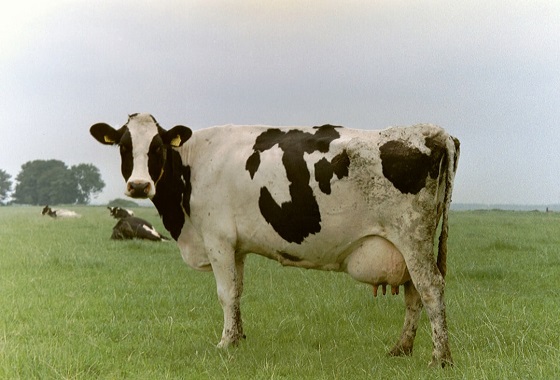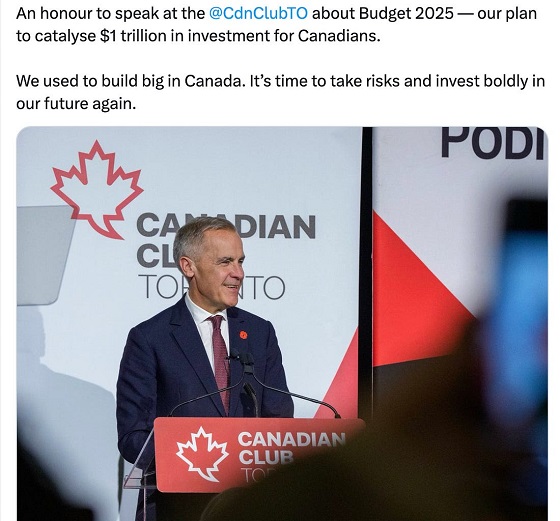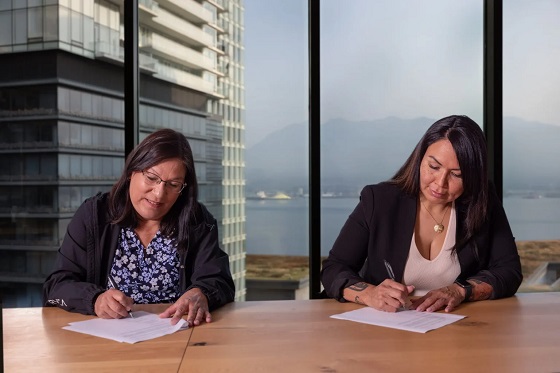National
Did the Liberals Backdoor Ruby Dhalla to Hand Mark Carney the Crown?
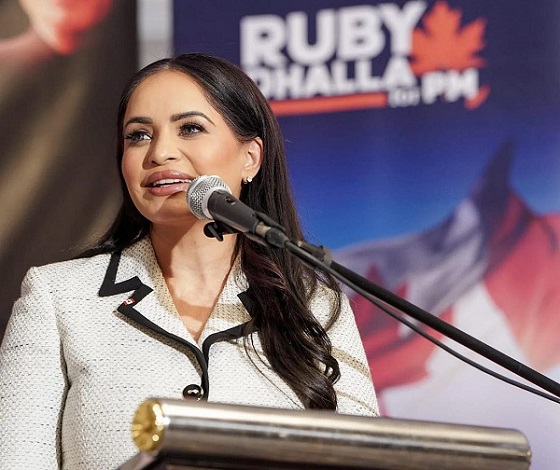
She was surging in the polls—so why was she secretly disqualified? Was this a race or a coronation?
She Wasn’t Supposed to Win
Ruby Dhalla wasn’t supposed to be a problem. When she entered the Liberal leadership race, she was treated as an afterthought, an outsider with no chance of breaking through. Mark Carney was the clear favorite—not because he had some overwhelming grassroots movement behind him, but because the Liberal swamp had already crowned him as Trudeau’s successor. The decision had been made long before the race even began. But then, something happened that the elites didn’t see coming: Dhalla started gaining traction. She started signing up thousands of new members. She started climbing in the polls. And that’s when the Liberal machine kicked into overdrive to shut her down.
If you’ve been paying attention to Canadian politics, none of this should be surprising. This is how the Liberal Party operates. The leadership race was never about choosing the best candidate; it was about making sure their pre-selected golden boy, Mark Carney, strolled into power without opposition. Dhalla’s rise threatened that plan, and as we’ve seen time and time again, the Liberal establishment has no patience for democracy when it gets in the way of their backroom deals.
Who Is Ruby Dhalla?
Unlike Carney, who spent his career bouncing between bureaucratic positions and the boardrooms of global financial institutions, Ruby Dhalla actually had experience winning elections. She wasn’t a puppet installed by the elites—she had built her own career in politics. Born in Winnipeg to Punjabi immigrant parents, Dhalla had been politically active from a young age. At just 14, she made international headlines for standing up to India’s Prime Minister over Sikh violence, proving early on that she wasn’t afraid to challenge powerful figures.
In 2004, she was elected as Member of Parliament for Brampton—Springdale, becoming one of the first Sikh women in Canada’s Parliament. For seven years, she fought for causes that mattered to working-class Canadians—pushing for foreign credential recognition, better healthcare access, and policies that helped immigrants integrate and succeed instead of being stuck in low-wage jobs.
But the Liberal Party, especially under Trudeau, doesn’t like independent thinkers. Dhalla lost her seat in 2011, took a step back from politics, and then, in 2025, decided to make a comeback. This time, she wasn’t just running on her record—she was running to take back the Liberal Party from the corporate elites, career bureaucrats, and political insiders who had hijacked it. And for a brief moment, it looked like she might actually succeed.
Dhalla’s Platform Was A Direct Threat to the Liberal Swamp
Let’s get one thing straight: Dhalla wasn’t just another Liberal politician running on empty platitudes. She was actually taking on the biggest failures of the Trudeau era—the very policies that have driven the country into the ground.
She was the only candidate willing to take a hard stance on illegal immigration, promising to deport those who entered Canada illegally and crack down on human trafficking networks that had turned Canadian cities into a magnet for asylum scams. This was a direct rebuke of Trudeau’s open-border policies, which flooded major urban centers with asylum seekers while leaving legal immigrants—the ones who actually followed the rules—waiting years in bureaucratic limbo.
She also had the guts to address Canada’s crime wave—something the Liberal establishment refuses to even acknowledge. Under Trudeau, violent crime, carjackings, and organized theft rings have exploded across the country, while the justice system has been hijacked by radical left-wing activists who care more about “rehabilitating” criminals than protecting innocent people. Dhalla called for stronger sentencing laws, increased funding for law enforcement, and an end to the revolving-door justice system that lets repeat offenders walk free. This was a direct challenge to the Liberal Party’s activist wing, which has spent years prioritizing criminals over victims.
Economically, she focused on the cost-of-living crisis that Trudeau’s reckless spending had fueled. While Mark Carney was busy rubbing elbows with globalist elites, Dhalla was actually talking to working-class Canadians who were struggling to afford basic necessities, being crushed by inflation, and priced out of homeownership. She proposed tax relief for small businesses, homeownership incentives, and policies to lower the cost of essential goods. Most importantly, she vowed to end corporate influence over government policy—something that would have put her in direct conflict with the very donors bankrolling Carney’s campaign.
The Fix Was In—And the Liberal Establishment Didn’t Even Try to Hide It
While Dhalla was out winning over actual voters, Carney didn’t have to lift a finger—at least, that’s how she sees it. According to Dhalla, the Bay Street donors, the Liberal bureaucrats, and Trudeau’s inner circle had already decided he would be their next puppet. But her unexpected momentum was throwing a wrench into their plans.
She claims her campaign signed up over 100,000 new members—a surge that, in her view, proved just how many Canadians wanted an alternative to the establishment. Internal polling allegedly showed that she was running neck and neck with Carney, challenging the idea that he was the inevitable frontrunner. Most importantly, she says she was calling out corruption within the party—something the Liberal insiders simply couldn’t tolerate.
That, she argues, is when the knives came out.
According to Dhalla, her campaign faced deliberate obstruction at every turn. She says she was denied access to crucial party membership lists, while Carney’s team faced no such restrictions. She also claims the party handed exclusive control of voter data to Data Sciences, a company with deep ties to both Trudeau and Carney—giving the establishment free rein over the internal mechanics of the race.
Then came what Dhalla describes as a financial ambush. Leadership candidates were required to submit a $350,000 deposit to stay in the race. Her campaign, backed by thousands of small-dollar donors, met that requirement in full. But just days later, she says, the party suddenly hit her with a six-page letter listing 27 allegations—none of which had been raised before she made her final payment. Despite fully cooperating, answering every question, and providing every requested document, Dhalla was disqualified behind closed doors.
But were these serious concerns about party rules and ethics? Or were they just serious concerns for Mark Carney’s leadership bid?
They didn’t even bother waiting for a debate. They removed her just before the first leadership debate in Montreal, ensuring that Carney wouldn’t have to answer a single tough question. The only real challenger was gone. And just like that, the “race” was over.
A Staged Leadership Race
With Dhalla and Chandra Arya—the only two South Asian candidates—mysteriously vanished from the race, the Liberal Party has officially dropped the mask. This is not a party of “inclusion” or “diversity” or whatever meaningless buzzword they trot out when the cameras are rolling. This is a party of insiders, where Trudeau’s handpicked elites play musical chairs with Canada’s future while pretending to hold a fair contest. And now, with the competition conveniently wiped off the board, Mark Carney—the globalist banker with a resume straight out of the Davos job fair—is all but guaranteed his coronation.
And let’s take a moment to acknowledge who’s left. Chrystia Freeland—who doesn’t even bother hiding her ties to Carney (he’s literally her children’s godfather)—isn’t running against him, she’s running as his insurance policy. If, for some reason, Carney stumbles, Freeland will be right there to catch the baton and carry on the exact same elite-driven, Canada-last agenda. And then there’s Karina Gould, a candidate so irrelevant to this race that her sole purpose seems to be testing the waters for the Liberals’ shiny new Marxist project: Universal Basic Income. Because if there’s one thing Trudeau’s Liberals love more than taxing Canadians into the ground, it’s making them dependent on government handouts.
This was never a leadership race. It was a staged coronation, a laughable farce cooked up by the same Liberal swamp who have spent the last decade running Canada into the ground. If this had happened in another country, Canadian politicians would be tripping over themselves to condemn it, talking about how democracy is under attack. But because it happened inside the Liberal Party, the media just shrugs and moves on, pretending this is all perfectly normal. Because, in their world, it is.
And that’s the real story here. If this is how the Liberals run their own leadership race, what do you think they’ll do in the next federal election? If they’re willing to purge their own candidates, rig their own nomination process, and outright silence anyone who dares to challenge their elite-controlled puppet show, then what chance does the average Canadian voter have?
This isn’t just corrupt. It’s disgusting. It’s a slap in the face to every Canadian who still believes in fair elections, free debate, and the basic idea that leaders should be chosen by the people—not installed behind closed doors by Trudeau’s golfing buddies and Bay Street billionaires.
The Liberal Party isn’t a political party anymore. It’s a gated country club for the ruling class, where power is passed around like a family heirloom. And if no one stands up to stop it, they’ll keep getting away with it. The fix is in, the swamp is deeper than ever, and the only question left is: Are Canadians going to do anything about it?
Subscribe to The Opposition with Dan Knight .
For the full experience, upgrade your subscription.
armed forces
Canadian veteran says she knows at least 20 service members who were offered euthanasia
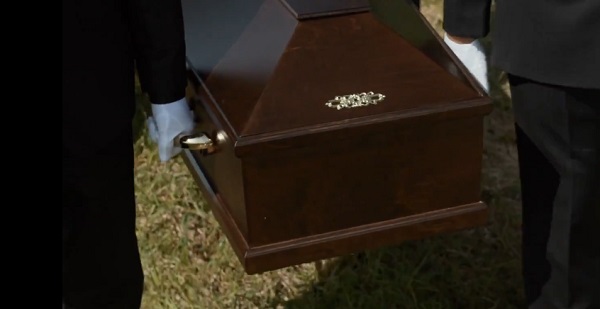
From LifeSiteNews
Canadian Armed Forces veteran Kelsi Sheren told members of the House of Commons that he has proof of veterans being offered assisted suicide.
Canada’s liberal euthanasia laws have made the practice so commonplace that a Canadian Armed Forces (CAF) veteran has said she knows and has “proof” that no less than 20 of her colleagues were offered unsolicited state-sponsored euthanasia.
Kelsi Sheren, who is a CAF veteran, recently told MPs in the House of Commons veterans affairs committee that “over 20 veterans have confirmed being offered MAID.”
“I have the proof, and I have proof of more,” Sheren told the committee during an October 28 meeting.
Conservative MP Blake Richards asked Sheren if she was willing to provide them with evidence to affirm her allegations.
Sheren noted how the 20 veterans have given written testimonies, or actual audio recordings, of when they were offered what in Canada is known as Medical Assistance in Dying (MAiD).
“We also have other individuals who are too afraid to come forward because Veterans Affairs has threatened their benefits,” she told MPs, adding that some other veterans were even offered non-disclosure agreements along with “payouts if they were to take it.”
Veterans Affairs Canada (VAC) has told the media its “employees have no role or mandate to recommend or raise (MAid). ”
As reported by LifeSiteNews, this is not the first time reports of CAF veterans saying they were offered MAiD.
Indeed, as reported by LifeSiteNews, it was revealed last year that the federal department in charge of helping Canadian veterans appears to have purposefully prevented the existence of a paper after scandalous reports surfaced alleging that caseworkers had recommended euthanasia to suffering service members.
LifeSiteNews recently published a report noting how a Canadian combat veteran and artillery gunner revealed, while speaking on a podcast with Dr. Jordan Peterson, that the drugs used in MAiD essentially waterboard a person to death. Assisted suicide was legalized by the Liberal government of former Prime Minister Justin Trudeau in 2016.
A new EPC report has revealed that Canada has euthanized 90,000 people since 2016.
As reported by LifeSiteNews last week, a Conservative MP’s private member’s bill that, if passed, would ban euthanasia for people with mental illness received the full support of the Euthanasia Prevention Coalition (EPC).
National
Conservative bill would increase penalties for attacks on places of worship in Canada
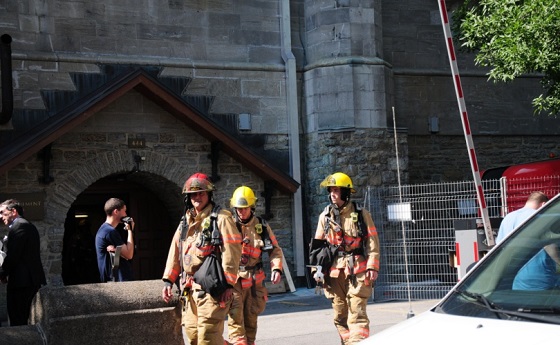
From LifeSiteNews
Conservative MP Kelly Block has introduced Bill C-255 to amend the Criminal Code with minimum penalties for vandalizing religious property amid hundreds of church burnings.
Conservatives are working to increase penalties for mischief directed at places of worship after hundreds of churches have been burned to the ground.
On November 6, Conservative Member of Parliament (MP) Kelly Block introduced her Private Members Bill C-255, which would increase penalties for criminals convicted of mischief directed at places of worship.
“Over the past 10 years, there has been an alarming rise in incidents of mischief committed against religious property of in Canada. Churches, synagogues, mosques, and other places of worship continue to be vandalized,” Block told Parliament.
The bill seeks to amend the Canadian Criminal Code by adding penalties for anyone “who commits mischief in relation to a building or structure, or part of a building or structure, that is primarily used for religious worship.”
According to the proposed legislation, for a first offense, an offender must compensate the property owner in an amount of not less than $1,000. For a second offense, the offender must compensate the property owner in an amount of not less than $1,000 and serve imprisonment for not less than 14 days.
For each subsequent offense, the offender must compensate the property owner in an amount of not less than $1,000 and serve imprisonment for not less than 30 days. If the offense is prosecuted by indictment, the offender is liable to imprisonment for a term not exceeding 10 years. If the offense is punishable on summary conviction, the offender is liable to imprisonment for a term of not more than two years less a day.
Campaign Life Coalition’s Pete Baklinski celebrated the legislation on X, writing, ” Hundreds of Canadian churches have burned to the ground in the past decade. Carney Liberals don’t seem to care.”
“That’s why it was nice to see Conservative MP @KellyBlockmp introduce a bill today (Bill C-255) to stiffen penalties for vandals who attack churches,” he continued. “About time!”
Hundreds of Canadian churches have burned to the ground in the past decade.
Carney Liberals don't seem to care.
That's why it was nice to see Conservative MP @KellyBlockmp introduce a bill today (Bill, C-255) to stiffen penalties for vandals who attack churches.
About time! pic.twitter.com/aTD6xHw0Tn— Pro-life Canadian Man (@PeteBaklinski) November 6, 2025
At the same time as Conservative MPs work to punish criminals who target churches, Liberals have repeatedly shut down motions to condemn the violence.
As LifeSiteNews reported last month, Liberal MP John-Paul Danko dismissed attacks on churches in Canada as “conspiracy theories” despite two churches being targeted in his own riding of Hamilton.
Hate-motivated attacks against Christians are on the rise in Canada. In 2021 and 2022, the mainstream media ran with inflammatory and dubious claims that hundreds of children were buried and disregarded by Catholic priests and nuns who ran some Canadian residential schools. The reality is, after four years, there have been no mass graves discovered at residential schools.
Regardless of this, over 120 churches, most of them Catholic, many of them on indigenous lands that serve the local population, have been burned to the ground, vandalized, or defiled in Canada.
The attacks are ongoing. Earlier in October, an Alberta Christian church was burned to the ground.
-
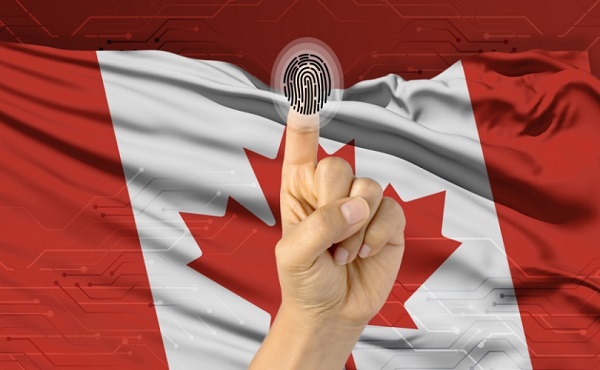
 Digital ID2 days ago
Digital ID2 days agoCanada moves forward with digital identification for federal benefits seekers
-
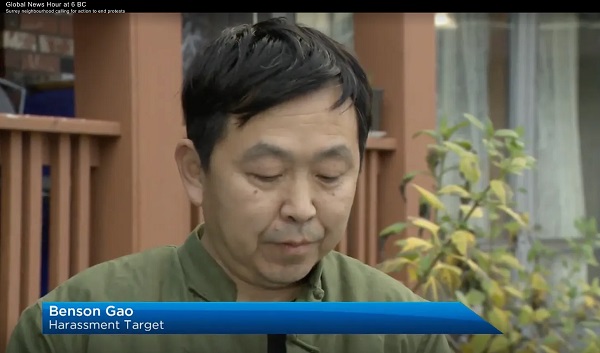
 espionage2 days ago
espionage2 days agoChinese-Owned Trailer Park Beside U.S. Stealth Bomber Base Linked to Alleged Vancouver Repression Case
-

 Alberta2 days ago
Alberta2 days agoSchool defunding petition in Alberta is a warning to parents
-
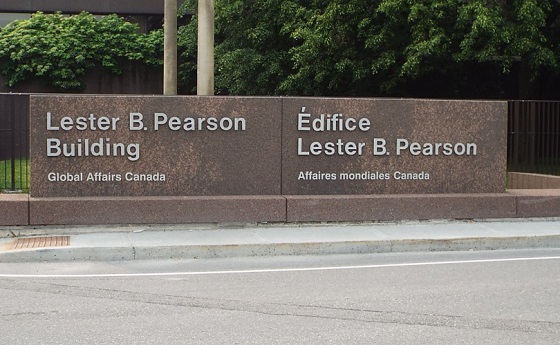
 Business2 days ago
Business2 days agoLiberals refuse to disclose the amount of taxpayer dollars headed to LGBT projects in foreign countries
-

 Daily Caller2 days ago
Daily Caller2 days agoLaura Ingraham Presses Trump On Allowing Flood Of Chinese Students Into US
-
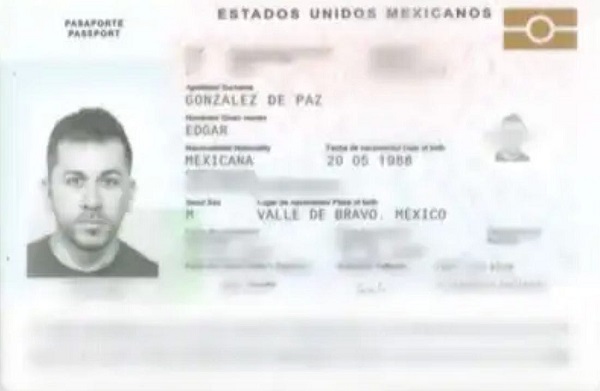
 Crime1 day ago
Crime1 day agoCBSA Bust Uncovers Mexican Cartel Network in Montreal High-Rise, Moving Hundreds Across Canada-U.S. Border
-

 Daily Caller2 days ago
Daily Caller2 days agoUS Nuclear Bomber Fleet Shares Fence With Trailer Park Linked To Chinese Intel-Tied Fraudster
-
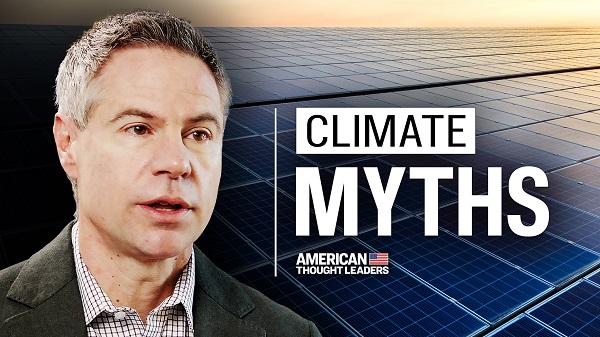
 Environment1 day ago
Environment1 day agoThe Myths We’re Told About Climate Change | Michael Shellenberger



